UPSC Daily Current Affairs: 29th September 2024 | Current Affairs & Hindu Analysis: Daily, Weekly & Monthly PDF Download
GS2/International Relations
Hezbollah chief Nasrallah killed in Israeli strikes
Source: The Hindu Why in news?
Why in news?
The Israel Defense Forces have killed Hasan Nasrallah, the long-standing leader of Hezbollah, which is an Iran-supported armed group and political entity that has significant control over southern Lebanon. Nasrallah had led Hezbollah for over 32 years, transforming it into a formidable force and becoming one of the most recognized leaders in the Middle East.
Here are the key points regarding the current conflict and its implications:
- Background of the Conflict:
- Hezbollah was established in 1982 as a Shia resistance movement with assistance from Iran's Islamic Revolutionary Guard Corps (IRGC) in response to Israel's invasion of Lebanon.
- The invasion aimed to remove the Palestine Liberation Organisation (PLO) from Lebanon, successfully relocating it to Tunisia and creating a buffer zone in southern Lebanon.
- This invasion, however, led to the emergence of Hezbollah as a significant long-term security challenge for Israel.
- Hezbollah's Structure and Purpose:
- Historically marginalized, the Shia community united under Hezbollah, which operates as a dominant political, military, and social entity.
- The group maintains a political party with parliamentary representation, delivers social services to the underprivileged, and possesses a robust military force backed by Iran.
- Hezbollah's primary objective is to resist Israel, explicitly stated in its founding manifesto, and it is considered a terrorist organization by Israel and the U.S.
- Historical Context:
- Hezbollah successfully compelled Israel to withdraw from southern Lebanon in 2000.
- The last significant war between the two occurred in 2006, following a cross-border raid by Hezbollah that provoked an Israeli invasion.
- The current escalation began after Hamas's attack on Israel on October 7, 2023.
- Hezbollah's response included launching rockets into Israel in support of the Palestinians, which led to retaliatory Israeli airstrikes on Lebanon.
- Impact of Nasrallah's Assassination:
- Nasrallah's death is regarded as a major turning point, drawing comparisons to the killing of Osama bin Laden.
- He led Hezbollah since 1992, following the assassination of Abbas al-Musawi, and was instrumental in Hezbollah's military successes against Israel.
- His assassination has significantly reduced one of Israel's primary military threats.
- Leadership Losses:
- Recent Israeli operations have decimated half of Hezbollah's leadership council, impacting around 3,500 leaders who were key in decision-making and military operations.
- This loss has hampered Hezbollah's ability to respond effectively to Israeli strikes, disrupting their command and intelligence capabilities.
- Regional Implications:
- The Axis of Resistance, a term used by Iran, refers to groups targeting Israel, including Hamas, Hezbollah, and the Houthis.
- Hezbollah has launched thousands of rockets at Israel since the recent Hamas attacks, marking a significant escalation in hostilities.
- The assassination of Nasrallah is seen as the culmination of Israel's efforts to dismantle Hezbollah's leadership, which began with the killing of Fuad Shukr.
- Consequences for Lebanon:
- Hezbollah has been the most powerful entity in Lebanon, exercising both military and political influence.
- Support for Hezbollah has waned since 2019 due to widespread protests against corruption within the Lebanese establishment, of which Hezbollah is a part.
- Though Nasrallah’s death has incited public mourning, it also presents an opportunity for Lebanon to weaken Hezbollah's control over national affairs.
- International Reactions:
- Future developments remain uncertain, particularly regarding how Iran will respond to Nasrallah's assassination and whether it will escalate or de-escalate tensions.
- Regional powers, including Saudi Arabia, the UAE, and Qatar, are closely observing the situation.
- The hostage situation involving 101 individuals held by Hamas remains critical, as their release could influence the trajectory of the conflict.
- India is also focused on regional stability due to its significant economic interests and the safety of its citizens in the West Asian region.
GS2/Governance
New draft guidelines on passive euthanasia
Source: The Hindu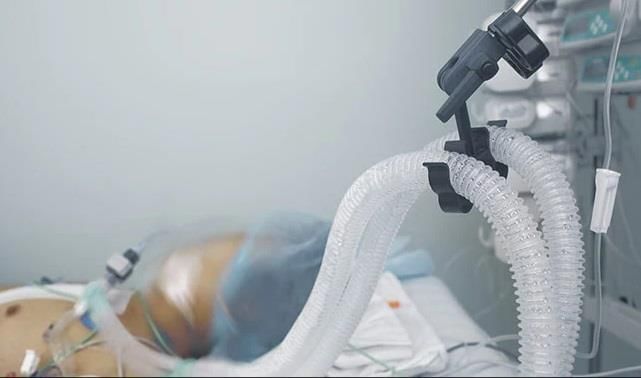 Why in news?
Why in news?
The 'Draft Guidelines for Withdrawal of Life Support in Terminally Ill Patients' have been introduced by the Union Health Ministry. Stakeholders are invited to provide feedback on these draft guidelines by October 20.
Although healthcare professionals have informally advised families to consider withdrawing care for terminally ill patients, a formal legal framework has been lacking.
- Euthanasia: Definition, Types, and Legality in India
- Draft Guidelines on Passive Euthanasia
About
- Euthanasia is the act of hastening a patient's death to alleviate further suffering.
Active Euthanasia
- Active euthanasia involves a physician's intentional effort, often through lethal drugs, to end the life of a terminally ill patient.
- It can be categorized into three types based on consent:
- Voluntary euthanasia – carried out at the patient's request.
- Nonvoluntary euthanasia – conducted without the patient’s explicit consent.
- Involuntary euthanasia – occurs when the patient is unable to provide consent.
Passive Euthanasia
- Passive euthanasia refers to the deliberate withholding or withdrawal of medical treatments, allowing death to occur naturally.
- This may involve ceasing treatments such as ventilators, feeding tubes, or medications that sustain life.
- Decisions regarding passive euthanasia are often guided by the patient’s wishes, advance directives, or through family members and healthcare proxies when the patient is unable to make choices.
- A Supreme Court ruling in Common Cause vs Union of India (2018) recognized the right to die with dignity.
- The ruling allows terminally ill patients to opt for passive euthanasia and to create living wills declining medical treatment.
- The Court acknowledged the right to die with dignity as a fundamental right under Article 21 (Right to Life).
- In India, active euthanasia remains illegal, and only individuals declared brain dead can be removed from life support with family consent.
Legality in Other Parts of the World
- Euthanasia is legalized in several countries, including:
- The Netherlands
- Belgium
- Luxembourg
- Spain
- Switzerland permits assisted suicide.
- Canada allows both euthanasia and assisted suicide, while certain U.S. states like Oregon, Washington, and California permit assisted suicide under strict regulations.
- Colombia has also legalized euthanasia.
- Each country has specific criteria, such as terminal illness or unbearable suffering, that must be met for euthanasia or assisted suicide to be legally performed.
Defined Terminal Illness
- The draft guidelines define terminal illness as an irreversible or incurable condition where death is expected in the near future.
Based on Four Conditions
- The guidelines for withdrawing or withholding medical treatment from terminally ill patients are based on four key criteria:
- The individual has been declared brainstem dead.
- A medical assessment indicates that the patient's condition is advanced and unlikely to improve with aggressive treatment.
- The patient or their surrogate has given informed consent to discontinue life support after understanding the prognosis.
- The procedure adheres to directives established by the Supreme Court.
Allow Patients to Decide on Life Support and Resuscitation
- Developed by experts at AIIMS, these guidelines empower patients to make decisions regarding life support and resuscitation.
- They also enable the withdrawal of supportive measures like ventilation or dialysis if a patient is brain dead, unlikely to benefit from further intervention, and if the patient or surrogate refuses care.
Provisions Related to Advance Medical Directives
- The guidelines mention advance medical directives, allowing individuals to document their treatment preferences in case they lose decision-making capacity.
- When a physician deems life-sustaining treatments inappropriate, the case will be referred to a primary medical board for evaluation.
- If the board concurs, a shared decision involving the family will be made, followed by a secondary medical board’s approval before life support is withdrawn.
GS1/Indian Society
Was Animal Fat Present in Tirupati Laddus?
Source: The Hindu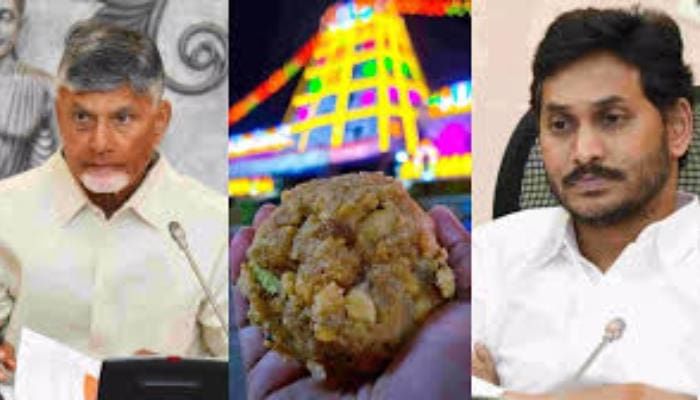
Why in news?
The revered Tirupati laddu, offered at the Tirumala Tirupati Devasthanams (TTD) in Andhra Pradesh, is under scrutiny following allegations that its preparation may involve adulterated ghee containing animal fats, including beef tallow and lard. This controversy has led to public outrage and raised questions regarding the authenticity of the ingredients used in this iconic prasadam.
Introduction:
The Tirupati laddu has recently faced scrutiny over claims that the ghee utilized in its production might be mixed with animal fats, which include beef tallow and lard. This situation has generated significant public concern, questioning the authenticity of the ingredients in this traditional prasadam.
Allegations of Adulteration:
The controversy was ignited by a technical report from the Centre for Analysis and Learning in Livestock and Food (CALF) under the National Dairy Development Board (NDDB), which indicated that the ghee supplied to TTD was adulterated. Various fats were identified, including those derived from soybean, sunflower oil, rapeseed oil, linseed, cottonseed, fish oil, coconut, palm oil, and even animal fats such as beef tallow and lard. The issue escalated when former Andhra Pradesh Chief Minister Chandrababu Naidu publicly claimed that animal fats were indeed being used in the laddus, prompting widespread protests.
How Adulteration is Detected?
Milk fat, like all organic fats, is made up of triglycerides, which are formed by glycerol bonded with fatty acids. The composition of these triglycerides can vary widely based on the fat source, such as cow ghee, vegetable oils, or animal fats. The most accurate method for detecting adulteration is gas chromatography, which separates the chemical components of a sample, producing a waveform that reveals the presence and proportions of various triglycerides. A method introduced by German scientist Dietz Precht in 1991 employs five equations to generate 's values' to identify specific adulterations. Each 's value' corresponds to a type of foreign fat, for example, s1 for soybean oil, s3 for palm oil and beef tallow, and s4 for lard. To be considered pure cow ghee, all five values must fall within a specific range; any deviation indicates adulteration.
Findings from the Tirupati Laddu Analysis:
Analysis of two ghee samples showed that all 's values' fell outside the accepted ranges, indicating adulteration. For instance, the s3 value, which is linked to palm oil and beef tallow, was recorded at 22.43, far exceeding the acceptable range of 95.9 to 104.1. However, experts caution that this does not definitively confirm the presence of beef tallow, as the test identifies groups of adulterants rather than specific fats.
Challenges in Differentiating Sources of Fat:
Identifying the exact sources of fat, especially within the diverse Indian context, presents considerable challenges. The methods used for detecting adulteration were primarily developed for European cows, necessitating recalibration of the 's values' for Indian cows based on local biochemical data. Additionally, the absence of specific baseline data for Indian bovines and tallow complicates the accuracy of these tests. Experts advocate for the establishment of a comprehensive database on the biochemistry of Indian ghee and animal fats to improve detection accuracy. It is possible to accurately differentiate adulterants using advanced spectrography methods, provided that India-specific data is accessible.
Conclusion:
The allegations surrounding the adulteration of Tirupati laddus have raised serious concerns regarding food safety and authenticity. While advanced testing methods indicate the presence of foreign fats, identifying specific adulterants remains complex without localized data. As this issue continues to develop, it highlights the pressing need for rigorous quality checks, transparency, and reliable data tailored to Indian contexts to ensure the purity of offerings that are culturally and religiously significant.
GS2/Polity
Digital Personal Data Protection Act
Source: Indian Express

Why in News?
NITI Aayog, the premier think tank of the government, has expressed opposition to certain provisions of the Digital Personal Data Protection Act 2023. Specifically, it raised concerns about the proposed modifications to the Right to Information (RTI) Act 2005.
- DPDPA is a comprehensive legislation aimed at privacy and data protection.
- It outlines the standards for processing, storing, and safeguarding personal data.
- The Act affirms the rights of individuals, termed as data principals, to secure their personal data during lawful processing.
- This legislation marks the culmination of a seven-year effort initiated by the Supreme Court of India.
- The effort began with the K.S. Puttaswamy case in 2017, which established the right to privacy as a constitutional right.
- The Act encompasses provisions on consent, legitimate data usage, and breach management.
- It outlines the responsibilities of data fiduciaries and processors.
- Individuals have rights concerning their data as per the Act.
- Notably, the DPDPA does not extend to paper records unless they are digitized.
- It also does not cover data collected for personal, artistic, or journalistic purposes.
- Penalties for non-compliance can range from Rs 10,000 for individuals to Rs 2.5 billion for organizations.
- Currently, the law is not yet in effect as the necessary implementation rules are still pending.
Key Features of the DPDPA:
- Applicability: The Act applies to all forms of data linked to an individual, including names, addresses, identification numbers, and behavioral data such as location, web activity, and personal preferences. However, it excludes data publicly available from individuals or third parties, meaning data that individuals consented to share is protected, while information indexed by search engines or social media is not.
- Defines data processing: Data processing encompasses the collection, recording, structuring, storage, sharing, or automated management of data. This processing may occur in India or abroad unless explicitly prohibited and applies to any company providing goods or services within India, irrespective of their headquarters' location.
- Defines responsibilities of specific entities: Data fiduciaries are organizations that engage with individuals to collect, modify, and delete data upon request. They must clarify the reasons for data collection, retention durations, and permissible uses.
- Significant data fiduciary (SDF):Entities processing substantial volumes of data may be classified as SDFs and are required to:
- Appoint an Indian data protection officer.
- Conduct third-party audits.
- Implement data protection impact assessments.
- Data processors: These are third-party companies that process data on behalf of fiduciaries, which can include cloud service providers or entities involved in KYC, fraud detection, and credit assessments.
Concerns Regarding DPDPA Raised by the NITI Aayog:
- The DPDP Bill seeks to amend a specific section [Section 8(1)(j)] of the RTI Act, which would prohibit the disclosure of personal information related to public officials, even when justified in the public interest.
- NITI Aayog suggested that the Ministry of Electronics and Information Technology (MeitY) should reconsider passing the proposed law in its current state, as it could undermine the RTI Act.
- This proposed amendment faced criticism from opposition parties and civil society activists during the consultation phase and when the Bill was discussed in Parliament.
- Despite these concerns, MeitY retained the proposed changes to the RTI Act, maintaining that the right to privacy is a fundamental right under the Constitution of India, which should apply to government officials as well.
GS3/Economy
Bharat 6G Alliance
Source: Economic Times
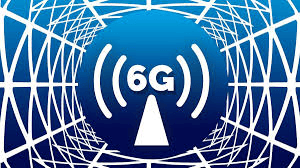
Why in News?
Recently, the union telecom minister has initiated a meeting with the seven working groups of the Bharat 6G Alliance, signaling the future arrival of 6G in India.
About Bharat 6G Alliance
- It is a collaborative platform focused on achieving universal and affordable connectivity.
- The Alliance promotes indigenous technology and aims to make India a global leader in the telecom sector.
- This platform includes a mix of public and private companies, academic institutions, research organizations, and standards development bodies.
- It aims to lead the development and deployment of 6G technology in India.
- The Alliance seeks to create partnerships and collaborations with other global 6G alliances, promoting international cooperation and the sharing of knowledge.
- The goal is to position India as a top provider of intellectual property, products, and solutions for affordable 5G, 6G, and future telecom technologies.
- One of the main objectives of the Bharat 6G Alliance is to connect Indian startups, companies, and the manufacturing ecosystem to form groups that will lead the design, development, and implementation of 6G technologies in India.
- A key aim is to make it easier for Indian telecom technology products and services to enter the market, helping the country become a global leader in 6G technology.
GS3/Science and Technology
Thermobaric Weapons
Source: Financial Express
Why in News?
Russia’s use of thermobaric weapons in Ukraine has drawn significant attention due to their devastating effects, but the development and deployment of these powerful bombs are not limited to Russia.
- Thermobaric weapons are often referred to as “vacuum bombs” or “enhanced blast weapons”.
- How they work:
- They include a fuel container with two separate explosive charges.
- These weapons can be launched as a rocket or dropped from aircraft like a bomb.
- Upon impact, the first explosive charge opens the container and releases a fuel mixture into the air as a cloud.
- This cloud can enter any openings in buildings or defenses that aren’t completely sealed.
- A second charge then ignites this cloud, creating a massive fireball, a powerful blast wave, and a vacuum that pulls in surrounding oxygen.
- This type of weapon can destroy reinforced buildings, damage equipment, and cause injuries or fatalities to people nearby.
- Impacts:
- The shockwave from thermobaric weapons can cause significant destruction to structures.
- The difference in pressure from the blast can lead to severe damage to the human body, including ruptured organs and lungs.
- Currently, there are no specific international laws that ban the use of thermobaric weapons.
- However, if a country uses these weapons against civilian populations in populated areas, such as near schools or hospitals, it could be charged with a war crime under the Hague Conventions of 1899 and 1907.
GS3/Science and Technology
Schizophrenia
Source: The Hindu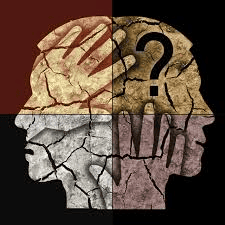
Why in News?
The US Food and Drug Administration (FDA) has approved Bristol Myers Squibb’s new oral medicine, Cobenfy, for the treatment of schizophrenia in adults.
About Schizophrenia
- Schizophrenia is a long-lasting and serious mental illness that changes how a person thinks, acts, feels emotions, sees reality, and interacts with others.
- This illness mainly impacts young adults who are in their working years.
- About 1 in 100 people will experience schizophrenia, with men being twice as likely to develop it compared to women.
Symptoms of Schizophrenia
- Symptoms can vary from one person to another, but they are usually classified into three main types: psychotic, negative, and cognitive.
- Psychotic symptomsinclude:
- Hallucinations: sensing things that are not present.
- Delusions: having strong beliefs that are not based in reality.
- Thought disorder: difficulty organizing thoughts.
- Movement disorder: unusual movements or lack of movement.
- Negative symptomsinvolve:
- Feeling less motivated.
- Losing interest or pleasure in daily activities.
- Withdrawing from social interactions.
- Having trouble showing emotions.
- Struggling to function in everyday life.
- Cognitive symptomsrefer to issues with:
- Attention.
- Concentration.
- Memory.
Treatment
- While there is no cure for schizophrenia, there are various antipsychotic medications that can help reduce the severe symptoms during an acute episode.
- Psychological therapies, such as cognitive behavioral therapy or supportive psychotherapy, can also help lessen symptoms and improve daily functioning.
GS2/Polity and Governance
Paryatan Mitra And Paryatan Didi Initiative
Source: AIR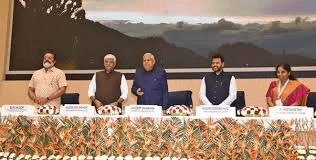
Why in News?
Recently, the Union Ministry of Tourism has launched a national responsible tourism initiative titled Paryatan Mitra and Paryatan Didi.
About Paryatan Mitra and Paryatan Didi Initiative
The main goal of this initiative is to improve the experience for tourists visiting various destinations. This is achieved by connecting them with friendly locals who act as proud ambassadors and storytellers of their places.
The vision is to invite everyone to discover Incredible India through the warmth of Incredible Indians. This aims to create a more welcoming, friendly, and memorable experience for tourists in India.
Paryatan Mitra and Paryatan Didi were launched in six tourist spots across India:
- Orchha (Madhya Pradesh)
- Gandikota (Andhra Pradesh)
- Bodh Gaya (Bihar)
- Aizawl (Mizoram)
- Jodhpur (Rajasthan)
- Sri Vijaya Puram (Andaman & Nicobar Islands)
Features
- This initiative focuses on training women and youth to create new tourism experiences, such as:
- Heritage walks
- Food tours
- Craft tours
- Nature treks
- Homestay experiences
- Other innovative tourism products based on local potential
- The training is inspired by the philosophy of Athithi Devo Bhava, which means treating tourists as honored guests.
- It is hoped that locals will use these skills to find good jobs, such as:
- Homestay owners
- Food and cuisine experience providers
- Cultural guides
- Natural guides
- Adventure guides
- Other roles in tourism
- Tourism-specific training is complemented by general training in digital literacy and using digital tools, making sure that the experiences they offer are visible to tourists both nationally and globally.
|
38 videos|5293 docs|1118 tests
|
FAQs on UPSC Daily Current Affairs: 29th September 2024 - Current Affairs & Hindu Analysis: Daily, Weekly & Monthly
| 1. क्या हिज्बुल्ला के नेता नसरल्लाह की हत्या इस्राइली हमलों में हुई है? |  |
| 2. क्या भारत में पैसिव इ्यूथनेसिया के लिए नए दिशा-निर्देश जारी किए गए हैं? |  |
| 3. तिरुपति के लड्डुओं में जानवरों के वसा का इस्तेमाल हुआ था? |  |
| 4. डिजिटल व्यक्तिगत डेटा सुरक्षा अधिनियम क्या है? |  |
| 5. भारत में 6जी गठबंधन का उद्देश्य क्या है? |  |
















